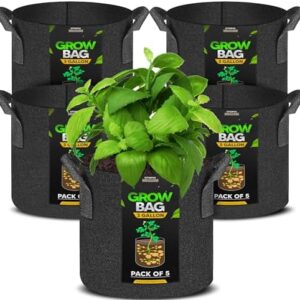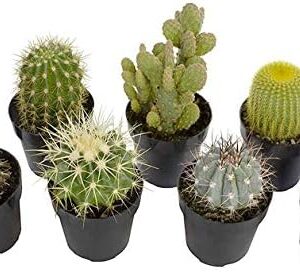If you love the idea of adding fresh herbs to your cooking but don’t have outdoor space or live in a climate where it’s difficult to grow them, fear not! Growing herbs indoors is a fantastic way to have a bountiful harvest all year round. With a little bit of know-how and some care, you can have a flourishing indoor herb garden that will provide you with fresh herbs whenever you need them.
Choosing the Right Herbs
The first step in growing herbs indoors is to choose the right herbs for your space. Some herbs thrive indoors, while others may struggle without the proper conditions. Some of the best herbs to grow indoors include basil, parsley, cilantro, mint, chives, and oregano. These herbs do well in containers and can tolerate indoor conditions.
When selecting herbs, consider how much light they require and how much space they need to grow. Some herbs, like basil and parsley, require a lot of light, while others, like mint and chives, can tolerate lower light conditions. Make sure you have the right spot in your home to provide the light your herbs need to thrive.
Choosing the Right Containers
Once you’ve selected your herbs, it’s important to choose the right containers to plant them in. Herbs do well in containers that have drainage holes to prevent overwatering. Choose containers that are slightly larger than the herb’s root system to allow for growth.
You can use a variety of containers for growing herbs indoors, including clay pots, plastic pots, or even recycled containers like old coffee cans or mason jars. Just make sure whatever container you choose has good drainage to prevent waterlogged roots.
Planting and Caring for Herbs
When planting your herbs, make sure to use well-draining soil specifically designed for container gardening. Fill your containers about halfway with soil, then gently remove the herb from its nursery pot and place it in the container. Add more soil around the herb, gently patting it down to secure the plant in place.
Water your herbs regularly, but be careful not to overwater. Herbs like to dry out between waterings, so make sure the soil is dry to the touch before watering again. You can also fertilize your herbs every couple of weeks with a balanced fertilizer to help promote growth.
Lighting and Temperature
One of the most important factors in successfully growing herbs indoors is providing them with the right amount of light. Most herbs need at least six hours of sunlight a day to thrive. If you don’t have a sunny spot in your home, you can use grow lights to provide the necessary light for your herbs.
Temperature is also important for herb growth. Most herbs prefer temperatures between 60-70 degrees Fahrenheit during the day, and slightly cooler at night. Avoid placing your herbs near drafty windows or vents, as this can stress the plants and impact their growth.
Pests and Diseases
Like any plant, herbs grown indoors are susceptible to pests and diseases. Keep an eye out for common herb pests like aphids, mealybugs, and spider mites. If you notice any pests on your herbs, try spraying them with a mixture of water and mild soap to help control the infestation.
Diseases like powdery mildew and root rot can also impact your herbs. Make sure to provide good air circulation around your plants to prevent the spread of disease, and avoid overwatering to prevent root rot. If you notice any signs of disease on your herbs, remove the affected leaves or plants to prevent the spread to healthy herbs.
Harvesting Your Herbs
One of the best parts of growing herbs indoors is being able to harvest fresh herbs whenever you need them. When harvesting your herbs, make sure to do so in a way that promotes continued growth. When harvesting basil, parsley, or cilantro, pinch off the top leaves to encourage new growth from the center of the plant.
For herbs like chives or oregano, you can trim the entire plant back to about two inches above the soil line to encourage new growth. Mint is best harvested by cutting off individual stems at the base of the plant. Make sure to harvest your herbs regularly to prevent them from becoming leggy or overgrown.
Using Your Herbs
Once you’ve harvested your herbs, it’s time to put them to good use in your cooking. Fresh herbs can add incredible flavor to a variety of dishes, from soups and salads to pasta and meats. You can also infuse herbs into vinegar or oil, or dry them for later use.
If you have an abundance of herbs, consider making herb butter or pesto to preserve their fresh flavors. You can freeze herb butter or pesto in ice cube trays for easy portioning, or dry herbs for use throughout the year.
In conclusion, growing herbs indoors is a fantastic way to have a bountiful harvest all year round. With a little bit of care and attention, you can have a flourishing indoor herb garden that will provide you with fresh herbs whenever you need them. So bring a taste of the outdoors inside and start growing your own herbs today!






